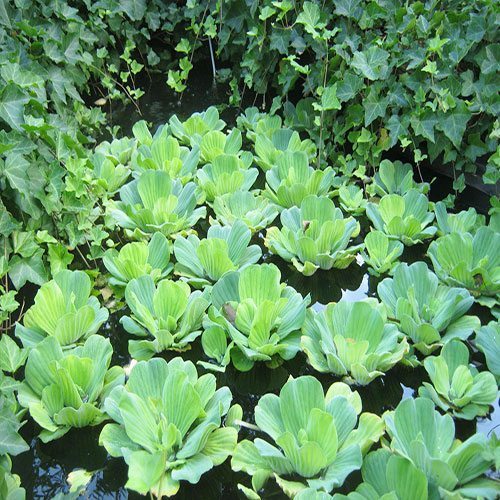
Jhendrix John Parulan
Aug 17,2020
Floating Water Lettuce
Water Lettuce – How to Grow and Care for Pistia (Water Lettuce) Quick Stats Care Level: Moderately Difficult Water Conditions: 6.5-7.2 pH and Soft to Moderately Hard Lighting Requirements: Medium Temperature: 70 to 80 °F (21-27°C) Maximum Size: 10 inches (25.5 centimeters) Water lettuce (Pistia stratiotes), also referred to as water cabbage, or Nile cabbage, is an aquatic plant that can be surprisingly difficult to grow in the home aquarium. But with a little bit of hard work, these plants form an attractive maze of hanging roots, which creates the perfect environment for fry and skittish fish. It is believed that water lettuce is native to Africa, though there is no consensus on where it originated from on the continent. It was first recorded on the Nile River, near Lake Victoria. In the ensuing years after its discovery, it has spread around the globe, and presents a very real threat to native vegetation and fish. In fact, it is illegal to own or transport water lettuce in certain states and countries, and anyone looking to purchase these plants should first check local regulations. Water lettuce grows up to 10 inches across (25.5 centimeters), though it tends to be smaller in the home aquarium. Its leaves have no stem and their surface is covered in short, soft hairs, which help to trap air and increase the buoyancy of the plant. Care Water lettuce grows floating on the surface water, and its leaves form a rosette, with dense, submerged roots beneath it. These plants grow like a weed outdoors, but they can be very challenging to grow in the home aquarium. However, if they are provided with the right conditions, they can completely overrun an aquarium, and in most cases, it’s a good idea to remove a few plants during weekly tank maintenance. A regular set of full spectrum T5 or T8 bulbs is sufficient to grow these plants, but as most water lettuce available for sale are grown in shade, they should slowly be introduced to full light. If they are placed under strong lights immediately after being purchased, it’s likely the leaves will scorch, and the plant will struggle to grow. Another problem that makes growing these plants indoors problematic is lack of humidity. If the room they are being grown in has low humidity, a person may want to consider adding a cover to the aquarium – even if it’s not optimal for a planted tank. Propagation Water lettuce can propagate both sexually and asexually, though sexual reproduction is exceedingly rare in the home aquarium. The flowers are tiny and are located at the center of the plant. Each plant will only have either male or female flowers. If successful fertilization occurs, a small, many-seeded green berry will form. Asexual reproduction is far more common in the home aquarium, and smaller daughter plants will form floating beside their mother plant, connected by a short stolon. When they reproduce with this method, they can form dense mats, and it’s important to not let them completely cover the surface of an aquarium. If they do, they will prevent light from reaching other plants, and can even suffocate the fish beneath them. When these plants are first purchased, they will often have numerous dead, yellow leaves. These leaves should be removed before adding the plants to the aquarium, ensuring the plants is primed for rapid growth. It will often start out slowly, but will begin to spread and grow very fast when mature. Compatibility Water lettuce is compatible with most fish, although larger fish like cichlids may damage it. However, it should be completely avoided in any tank containing goldfish or any other large herbivore fish, as they tend to eat the roots, and even the plant itself. Growing Water Lettuce in Aquariums with Current If a person is using a hang-on-back filter, it can be difficult to get these plants started. Often, they will be pushed around the tank by the current, or even submerged if they float under the outflow of the filter. The best way to deal with this problem is to create a ‘roped off area’ for the plant. The way that I handled this in the past, was by using clear air tubing strung across the top of the aquarium. It was affixed with suction cups on either side of the tank just under the surface. This allows the plants to grow and form a mat, and once they are in a dense mat, they should stay relatively stationary – even with a significant amount of current.
1 Comments
-
 Mark Arcel LetadaAug 30, 2020 10:55check my latest article too :) https://www.goodinfonet.com/goodnews/perseverance-donateanotebook
Mark Arcel LetadaAug 30, 2020 10:55check my latest article too :) https://www.goodinfonet.com/goodnews/perseverance-donateanotebook













Comments